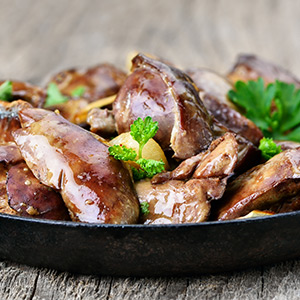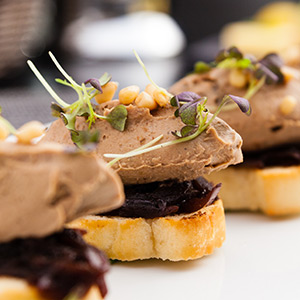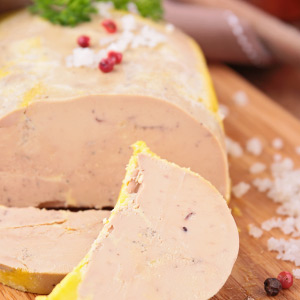- 5 unforgettable BBQ marinades
- How to Make a Perfect Roast Every Time
- Filet mignon: different recipes for different cuts
- Guide to Cooking Beef
- Tips on How to BBQ Like a Pro
- 5 Ways To Reinvent the Burger
- Prepare and Cook Sausages
- Skewers Bar: Pile Up on Flavour
- 6 Pork Cuts You’re Sure to Love
- Spices to Flavour Meat
- Soul Food at Home
All About Liver
Liver is an edible red offal or giblet. Whether it comes from poultry, veal, beef, pork, lamb or game, it’s always a gourmet favourite, but the calf's liver is the most sought-after because of its delicate flavour.
Goose or duck foie gras is prized by connoisseurs, and should be cooked as simply and as quickly as possible.
Meat and poultry liver

Cooking methods:
Roasted liver
1Pre-heat the barbecue to medium.
2Put the prepared and cut liver on a double layer of greased aluminum foil.
3Cook for 5 to 8 minutes, turning midway through the cooking process.
Sautéed liver
1Toss strips of liver with fruit vinegar or wine, then cook strips of liver over medium-high heat for 4 to 7 minutes, turning frequently.
Tips and advice
- To prevent an already-cleaned liver from drying out, cover with plastic wrap and refrigerate.
- If liver is frozen, let thaw before cooking.
- Sliced pork or veal liver should be marinated in cold milk for 1 to 2 hours in the refrigerator to mellow its strong smell.
- Do not overcook liver; it will lose its creamy, delicious smoothness. For maximum flavour, liver should be served slightly pink in the centre.
- Veal, lamb and poultry liver are tender enough to be grilled or sautéed.
- Liver is often cooked with mushrooms, wine, cream or onions. You can also try it with mustard, fried bacon, a creamy garlic sauce or a tomato sauce with olives.
- A sprinkle of citrus juice or wine and a drizzle of olive oil will keep liver tender and mellow its strong smell.
- Pork liver has a more pronounced taste and should be marinated or used in pâtés and terrines.
Expert tip
Choose a gleaming liver without a strong odour that is not soaking in much liquid. Allow approximately 115 grams (4 oz) of raw liver per portion to obtain 90 grams (3 oz) when cooked.
Nutritional value
Liver is very high in iron, folic acid, phosphorus, zinc, copper, and vitamins A, B12 and C.

Foie gras
Foie gras is the liver of a force-fed duck or goose. Prepared and cooked with care, it is considered an exceptional gastronomic dish. The term foie gras, as regulated in many countries, is a ready-to-eat product containing at least 20% duck or goose foie gras. France is the major producer. If the product contains livers or parts of other animals, the terms pâté, terrine or galantine have to be added to the term foie gras.
Cooking methods

Fried foie gras
1Brown the liver over high heat in a small pat of butter.
2Do not cook for more than 30 to 60 seconds on each side. You want to give it a nice toasted colour, not melt the liver!
3Remove the liver from the frying pan and transfer to a plate.
4 Deglaze pan with port, cognac or Madeira and drizzle over liver.
Tips and advice
- Foie gras is sold raw or ready to eat. It should always be stored in the refrigerator.
- Serve raw foie gras in thick (1 cm or ½ inch) slices. If there is a membrane, remove before slicing or cooking.
- To serve foie gras, slice with a knife that’s been rinsed in warm water. Eat with a fork or serve on toasts.
- If you are frying raw foie gras to serve as an appetizer, calculate 100 grams (3 oz) of cooked foie gras per person.
Expert tip
Open foie gras packaging one hour before serving and leave standing in a cool place.
Nutritional value
The nutritional value of foie gras varies according to the ingredients used, but it is generally high in fat and calories and should be enjoyed in moderation.
Storage
Foie gras is highly perishable. Once opened, it can be stored for 3 to 4 days in the refrigerator.
Try liver in one of these delicious recipes
















